Chairlifts. A machine cherished deeply by skiers. They somehow continue to turn through the cold frigid months, making fulfillment of our addiction to this sport easier than ever. However once the temperature rises and resorts close down the lifts aren't just idle until winter returns. Picture buckets of grease, dirty hands, and a crew of dedicated skiers in the offseason working to make these lifts rideable next snowfall.
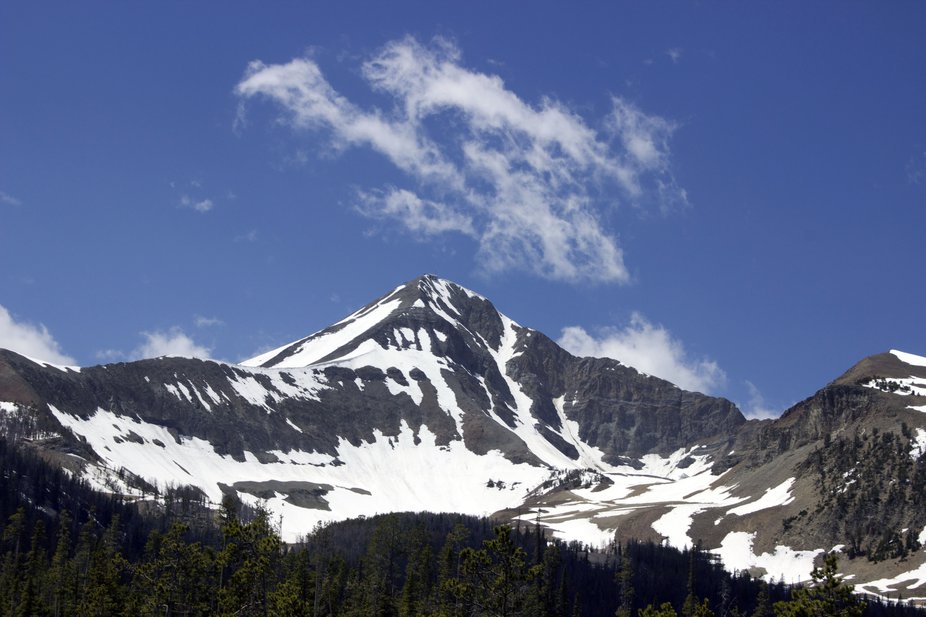
My eyes were opened to the complexity of chairlifts while spending a summer day on the mountain with Daphne Pavsek, a member of the lift maintenance team at Big Sky Resort. During the winter, lift maintenance workers are blessed with the job of starting the lifts in their respective zones then having the option to go out and ski until called to make a repair. Daphne noted that summer on the job contains basic maintenance that is universal to most lifts, plus all the random quirks that are specific to that lift and need special attention. The work can be divided up into four different categories; line work, terminal work, chair work, and shop work.
E: Explain the two different types of lifts:
D: There are two major types of chairlift, fixed grip and detachable grip also known as high speed. Fixed grip means exactly that, the grip of the chair that attaches to the haul rope/cable is fixed and isn't supposed to move. The chair runs at the same speed the whole time unlike a high speed lift. These are typically older chairlifts or ones that climb steep terrain and don't need to carry as many people.
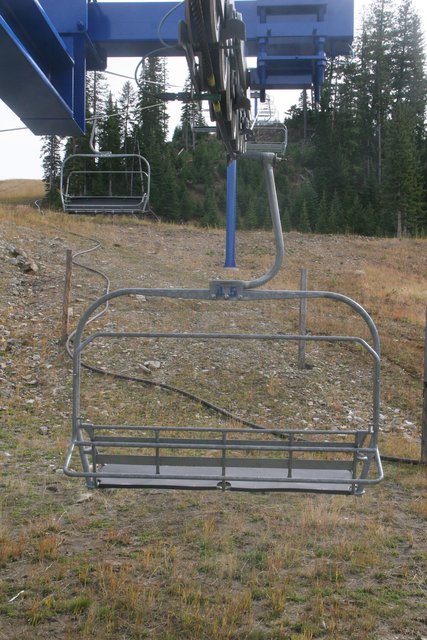
Fixed Grip Chair
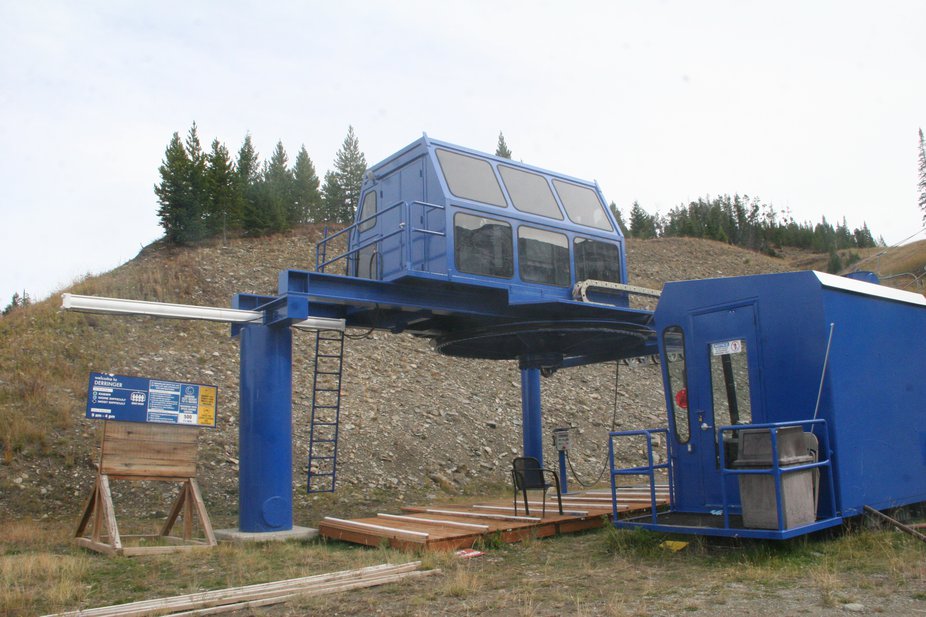
Fixed Grip Terminal
Detachable grips literally detach from the haul rope every time the enter the terminals. Ever wonder why the high speed lifts slow down at the bottom and top? That's why. The grip opens and releases from the rope and tires and belts propel it through the terminal until it reaches the other side where it reattaches and takes off on its merry little way. They are a more complicated and modern machine that require more maintenance.
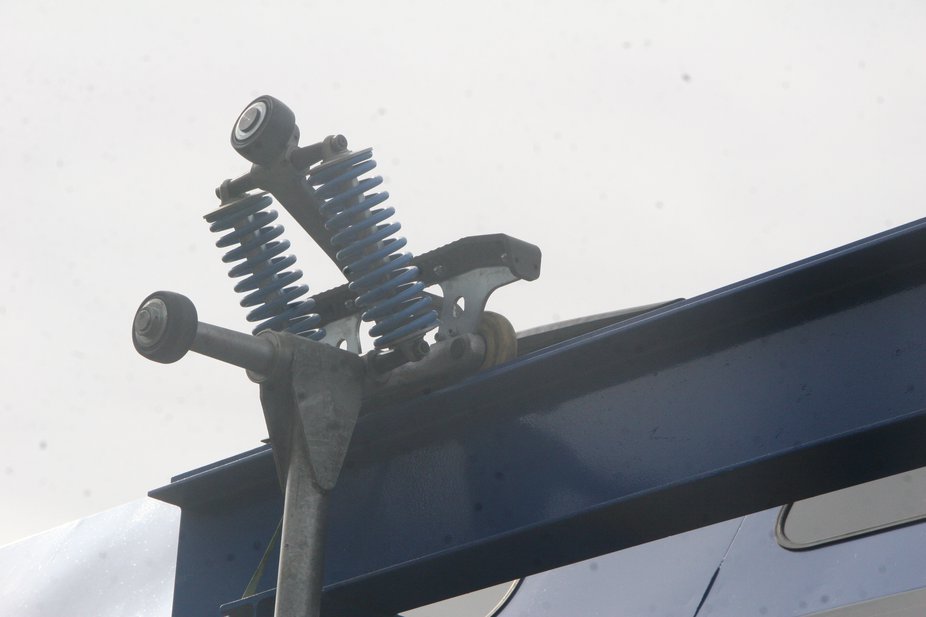
Detachable Grip
E: Run us through the maintenance processes
D: Line work requires three people, someone to operate the lift while the other two go out on the work car. The work car is a modified chair that is essentially mobile scaffolding. You have your basic floor where you stow all the tools and what not and then an upper panel to stand on while you work on the towers. While on line you have to wear a harness and remained clipped in the whole time. It feels similar to standing on a boat, the whole work car swings like the chairs do and if you don't distribute weight evenly the whole thing will lean to one side.
While on line you are doing tower work which entails changing sheaves (those wheels that the haul rope rests on at each tower), you grease the axles and the sheaves and you check all of the circuitry to make sure the switches and bars that stop the lift if it derails are all in working order. Each lift is different but in order to do any work to the sheaves or axles you have to lift the cable off of the whole assembly via rigging and then set it back down before the lift can start.
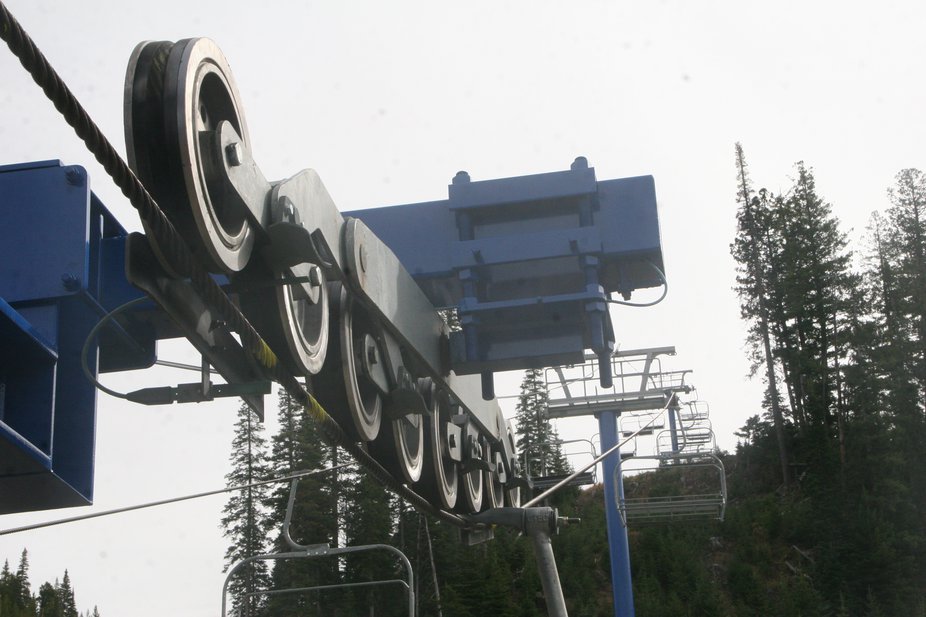
Tower Assembly
The sheave wheels go bad every few years, either the liner gets worn out or the bearings go bad. Its easy to spot a bad wheel, it either sounds terrible due to the bearings or the liner wear is super visible. Checking circuitry is not as difficult, you turn the switch on and off or pull out the bar and put it back in and the operator will let you know when each tower goes offline and back online. If the operator can't see that the tower is off/online then you know the circuit is broken and you replace it.
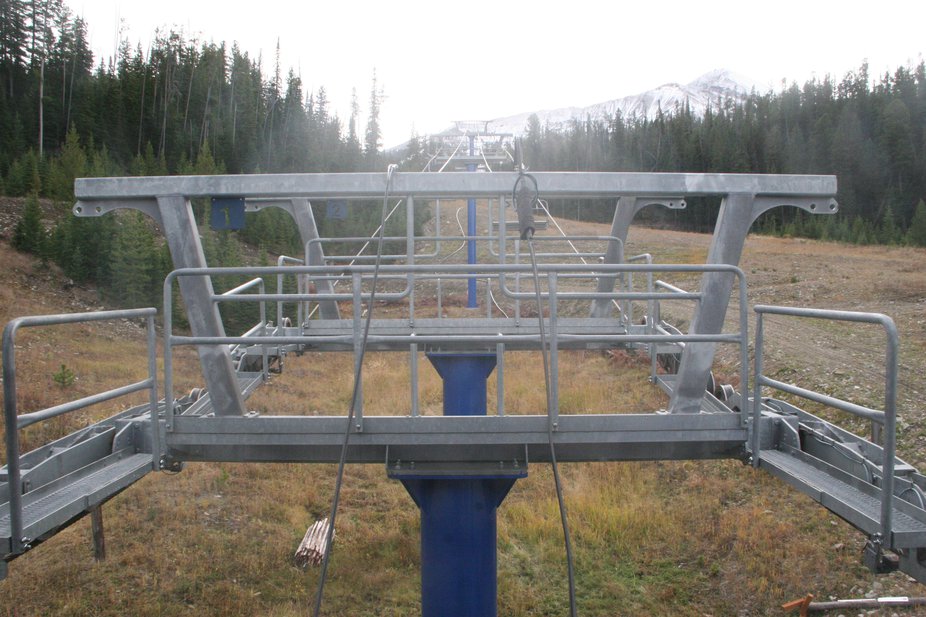
Tower
D: Terminal work involves the engine, the gearbox and the bullwheels. Like any motor, the oil needs changing and filtering. Almost every lift these days has two motors, an electric motor and a backup diesel auxiliary engine that is used to run the lift in case of power failure. Very few ski areas these days use the diesels for everyday operation (I think Mt. Baker is one of the last ones still in the stone age).
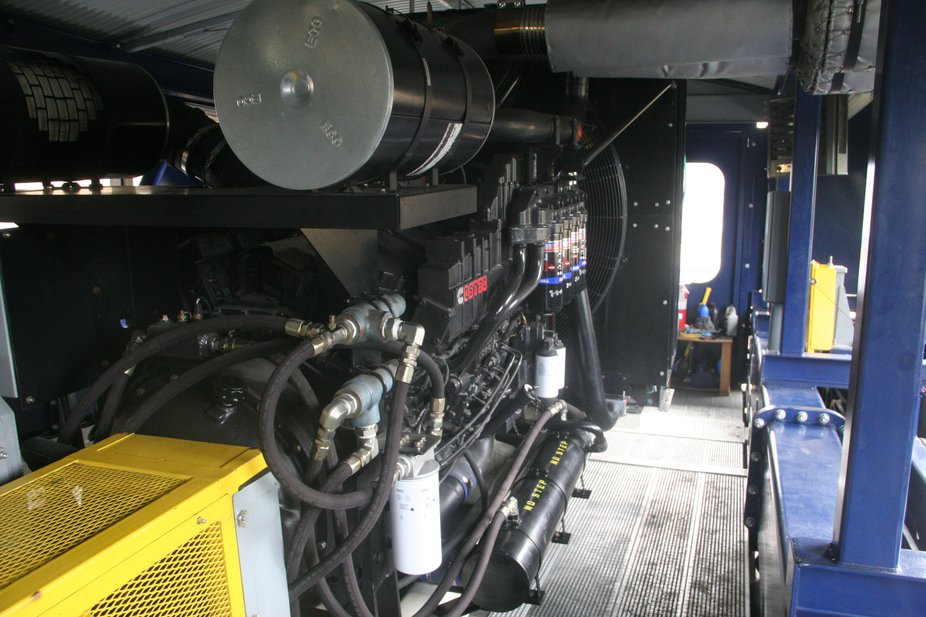
Diesel Motor
Electric motors are far more efficient and reliable and cost less for the resort to run, plus they are a lot less noisy which makes life way nicer for the liftys. The bullwheel has its own liner which can wear out so sometimes that needs to be replaced but that only happens every 5-10 years or so. The bullwheel also needs to be greased which can take anywhere from 1-5 hours depending on the size. Some of the bigger bullwheels can take over 5 gallons of grease which means a lot of sitting and waiting while the pneumatic greaser pumps it in. The gearbox is what takes the power from the engine and turns the bullwheel, propelling the lift and it needs to be filtered much like an engine. Detachable lifts also require basic maintenance on the tires and belts that propel the chair while it is in the terminal. The tires go flat and the belts will fray and need replacing.
D: Chair work: Every year 20% of the chairs get removed from the lift so they can be fully inspected and the grip gets rebuilt. This ensures that each chair gets done once every 5 years. The grips get removed from the chairs and taken back to the shop for a rebuild and inspection, the chairs just chill on the ground, get the critical points inspected and wait for the grips to be done. Fixed grips take almost no time to rebuild, they're typically just a spring pack, a mobile jaw and a fixed jaw plus a few small pieces. The detachable grips can have up to 50 parts depending on the make. Some rely on dual spring packs to open and close, some have torsion bars. We have three different types of detachable grip at our mountain alone.

Tower
The inspection is what we call NDT, or non-destructive testing, in which an NDT certified mechanic examines the welds and critical points with a black light and magnetizing. If they discover a crack on any of the parts, that part fails. If 10% or more of the parts from the 20% fail, all of the chairs have to be removed and inspected. This rarely happens, but when it does its a huge pain. After the grips have been NDT'ed and rebuilt they go back on the chairs and the chairs go back on the line.
D: Shop work: Pretty much any time something needs to be rebuilt it goes back to the shop. Sheaves, grips, assemblies etc. A grip rebuild on a long, detachable lift can require up to 2 weeks in the shop disassembling, cleaning, inspecting and reassembling everything. Rebuilding sheave wheels takes a lot less time, usually about 20 min per wheel depending on the size. Some of the larger terminal sheaves can take a few hours. Luckily for us, the vast majority of our job lets us be outside and we only have to be cooped up indoors for a little bit.
In addition to all of this routine maintenance, there are quite a few special projects that go on during the summer. Everything from motor pulls to cable splices are way easier to do when the weather is nice so we try to schedule them accordingly. The electric motors need servicing and cleaning by a specialist from time to time so a crane gets called in and the motor is removed from the terminal and shipped off to wherever it needs to go.

Six Shooter
Every year a cable specialist comes to the ski area and inspects all of the haul ropes for wear and stretching. He then determines which lifts need to be spliced or have a complete haul rope replacement. If the rope is stretched out too far it maxes out the carriage of the lift and makes it so the tensioning system can't work properly. Splices are an intense project that require 10 or more people plus the specialist. There are only a handful of people in the world who are certified to splice haul ropes and they make an obscene amount of money to do it. When a splice occurs the chairs are removed from the area of the rope where the splice is, the rope is removed from 2-4 towers and rigged to the ground so that the area of the splice is slack and can be cut without tension. The typical haul rope consists of a core surrounded by 6 strands. The actual splice is a couple hundred feet long because each of those strands gets tucked into the rope several feet from the last one. Its a difficult process to describe without seeing it, but basically its all braided together in a very particular way.
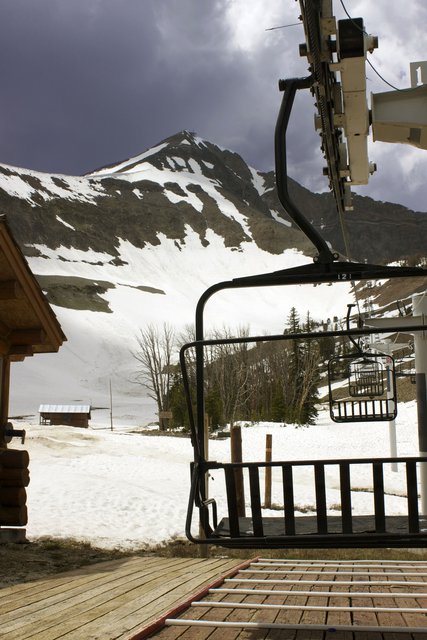
D: All in all it is a very rewarding job, very few people have any idea how chairlifts run and all the work it takes to keep them safe. If I had a dollar for every time someone asked me "so you're a lift mechanic? What do you do in the summer?" I'd be a wealthy individual. It takes a dedicated person who isn't afraid of manual labor, getting absolutely filthy and climbing around on some pretty sketchy things that are very high in the air.

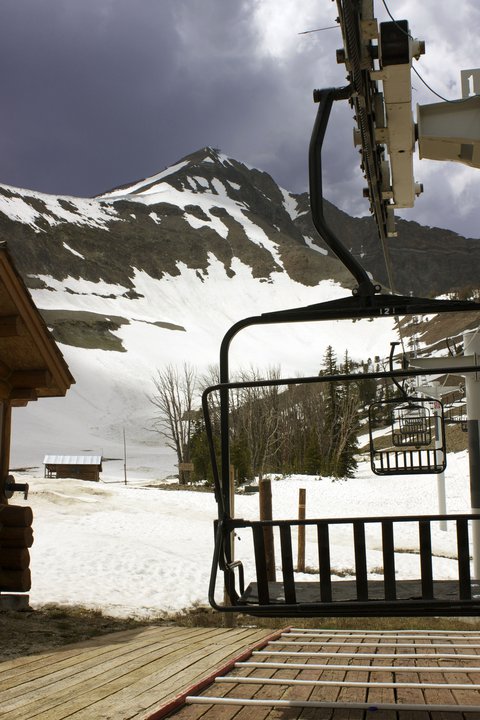
Comments